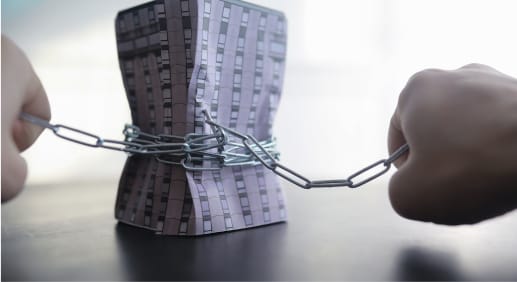- There is approximately $2 trillion in commercial real estate loans that are coming due by the end of 2025.
- That could lead to a number of different types of litigation facing commercial real estate owners.
- But being prepared in advance, owners can potentially avoid that litigation or at least be successful during it.
Anyone that has been involved in commercial real estate for a while knows this can be a volatile business. We’ve seen booms and busts, bubbles and bursts. But the coming refinancing storm on the horizon could be jarring – even for experienced commercial real estate professionals. With $2 trillion in CRE loans set to mature by the end of 2025, a tsunami of legal issues is poised to crash ashore. Buckle your boots, folks, because the waters are going to get choppy. So lets talk about it.
Potential Litigation: A Legal Landscape in the Making
The refinancing crunch, fueled by rising interest rates and a changing market, threatens not just financial stability, but also throws open the door to a plethora of potential lawsuits. We have talked previously about the oncoming mess of refinance and what you can do, as a commercial real estate owner, to protect yourself. But today I want to talk about some potential legal issues and litigation that may come as a result of the refinance boom. That potentially includes:
- Lender vs. Borrower: Breach of Contract, Fraudulent Inducement, and All That Jazz
Imagine this: your loan expires next year and the market’s gone south. Suddenly, the terms lenders promised seem impossible to meet. Borrowers, facing the prospect of default or predatory terms, will likely look for legal alternatives to being foreclosed upon. That usually starts with trying to do a workout with the lender. But it can also include potential litigation. Lawyers will be parsing loan documents, searching for inconsistencies, and claiming fraudulent inducement to renegotiate terms or even seek damages. Lenders, on the other hand, will defend their legal right to adjust rates and terms based on market realities. Prepare for heated discovery battles, expert testimony on valuation models, and judges juggling competing interpretations of “best efforts” clauses.
- Partner vs. Partner: Dissolution Dances and Disputes in Joint Ventures
When the music stops in a refinancing waltz, who gets the real estate rose? Joint ventures, common in Texas CRE, are breeding grounds for conflict. One partner might want to walk away, another might fight to hold on. Expect disputes over loan guarantees, valuation of assets, and allocation of losses. Lawyers will be drafting dissolution agreements, arguing breach of fiduciary duty, and dissecting operating agreements with surgical precision. It’ll be a tango of Texas-sized egos and lawyers wielding legal briefs like dueling sabers.
- Environmental Liabilities: Unmasking the Ghosts in the Walls
As environmental regulations evolve, lenders are hyper-aware of potential hidden liabilities. Borrowers, hoping to secure new loans, might not disclose environmental issues, fearing rejection. This opens a can of worms. Lenders who discover contamination later could sue for fraud, seeking to either rescind the loan or recover cleanup costs. Environmental lawyers will be busy investigating soil samples, analyzing regulatory compliance, and drafting complex remediation plans. It’s a game of environmental hide-and-seek with potentially sky-high stakes.
- Title Defects: Skeletons in the Property Closet
Imagine renegotiating your mortgage when a long-lost relative surfaces, claiming ownership of your prized office building. Title defects, lurking like dusty skeletons in the Texas land records, can derail any refinancing deal. Borrowers could find themselves facing lawsuits from undisclosed heirs, creditors, or even government entities with competing claims. Title lawyers will be poring over dusty deeds, deciphering ancient surveys, and unraveling chains of ownership.
Beyond the Battlefield: Strategies for Avoiding the Legal Crossfire
While litigation looms, proactive measures can mitigate the risk of getting drawn into costly courtroom battles. Here’s some essential legal ammo for Texas CRE owners navigating the refinancing storm:
- Proactive Communication: Open and honest communication with lenders is crucial. Don’t wait for the eleventh hour to address concerns.
- Meticulous Documentation: Maintain meticulous records of loan documents, environmental reports, and title searches.
- Seek Early Legal Counsel: Consulting a savvy CRE lawyer early on can help identify potential pitfalls and craft strategies to avoid litigation.
- Explore Alternative Solutions: Consider loan extensions, modifications, or joint ventures with financially stronger partners.
Remember, Texas is a land of opportunity, but also a land of fierce legal battles. As the refinancing storm approaches, arm yourselves with knowledge, legal counsel, and a healthy dose of pragmatism. The path to securing your CRE future might not be paved with gold, but with careful navigation and legal foresight, you can weather the storm and emerge stronger than ever.
So, buckle up, Texas CRE owners. The next few years promise to be a wild ride, but with the right legal compass, you can steer your property safe and sound through the treacherous waters of refinancing. Just remember, in the legal jungle, knowledge is your machete, and a good lawyer is your trusty guide.



